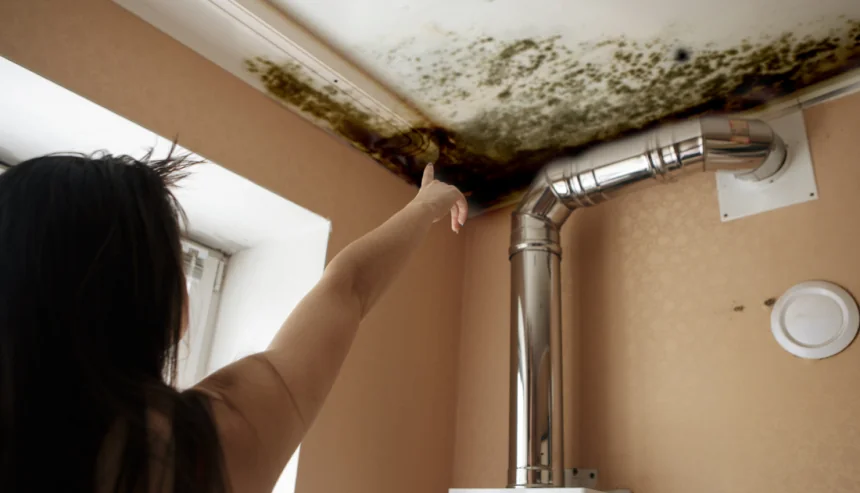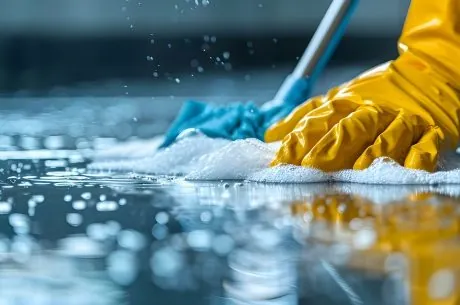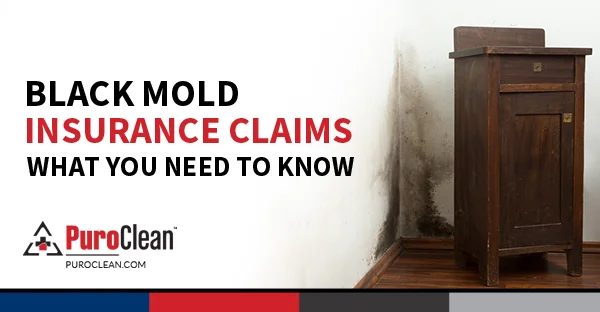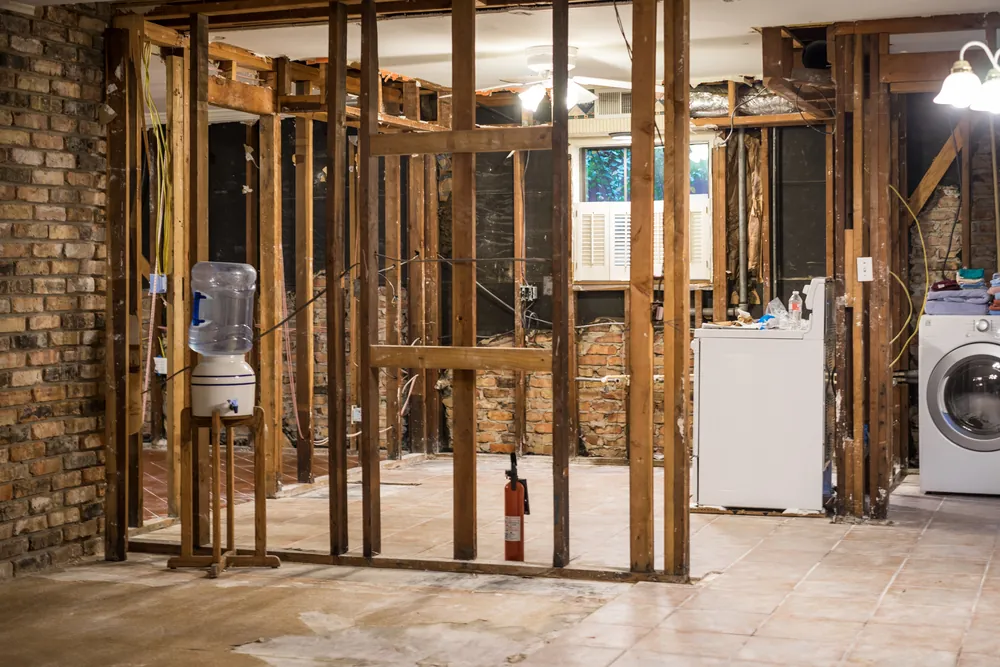It might be surprising to find out that mold has the ability to grow nearly anywhere. It can even grow on bathroom ceilings and other ceilings in your home too. In fact, mold can just as easily grow on the ceiling as it does on any other surface. When you see mold on the ceiling, it is important to deal with the mold problem as quickly as possible as not only is mold unsightly, but it can also cause health issues.
The longer you wait, the more damage it can do to your ceiling, and the easier it will be for mold to spread or re-grow. Always take precautions when you suspect mold is present. If the mold affects a small section of your ceiling under 10 square feet, this blog will discuss some home remedies to treat the mold.
What Causes Mold Growth in a Ceiling?
Mold spores are all around us. These spores have the ability to latch onto surfaces and grow in many different conditions. Unfortunately, that also means there are many reasons why mold may start to grow in your ceiling. Some of the most common causes are high humidity levels in your home, poorly ventilated spaces, allowing organic material (such as plants) to remain on or near your ceilings, and poor indoor air quality.
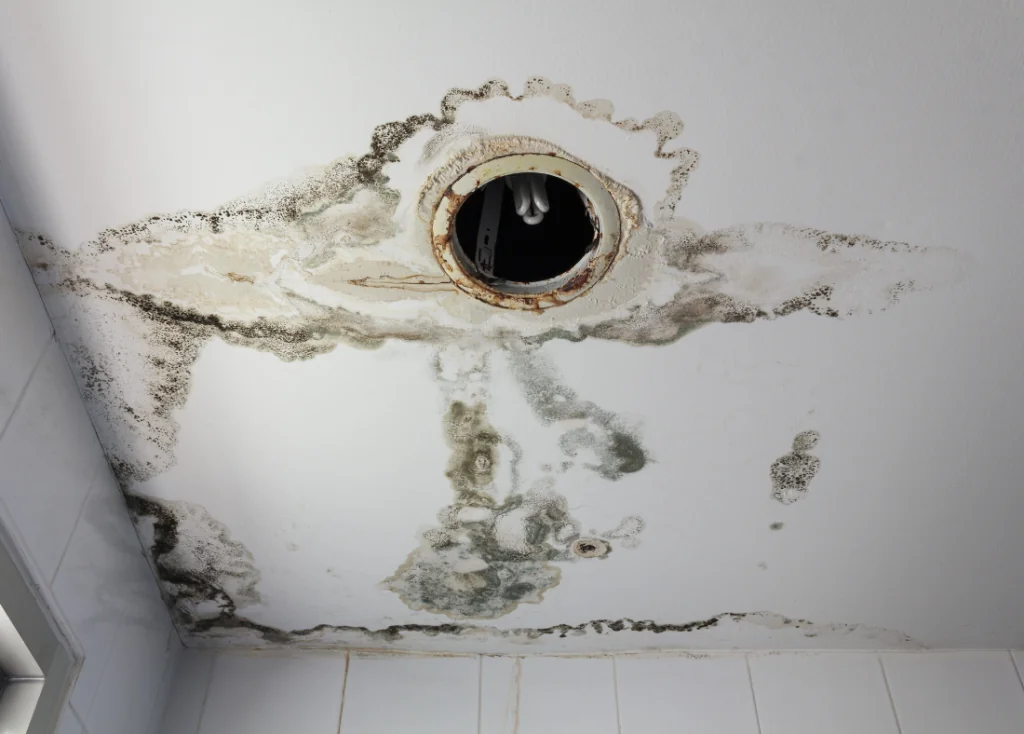
What Are Some Signs of Mold Growth on the Ceiling?
Mold stains are the most reliable sign that you have mold in your ceiling. But, even if they aren’t visible, there may still be some mold spores floating around your house. A musty smell could also be a sign of mold problems. To be entirely certain, you should have a professional inspect your ceiling to identify what type of mold is present and how much of it is growing.
You will need to investigate what exactly is causing excessive moisture in your bathroom or bedroom so you can solve this problem faster and prevent the spread of mold spores further throughout your home.
First Things First: Find the Source
It’s vital to identify the source of moisture before you remove mold from the ceiling. If you fail to identify the source, then you are setting yourself up for failure as the mold is likely to return.
If you have a leaking roof, it’s possible that water can drip down the walls or through a crack in a ceiling and cause mold to form on the ceiling. However, mold growth on ceilings is more likely to happen in bathrooms, where humidity levels are high. Mold growth on the ceiling can be caused by prolonged plumbing leaks or high humidity.
If there is no obvious source of water, then the issue may be related to poor ventilation, insulation damage, or loose roof tiles.
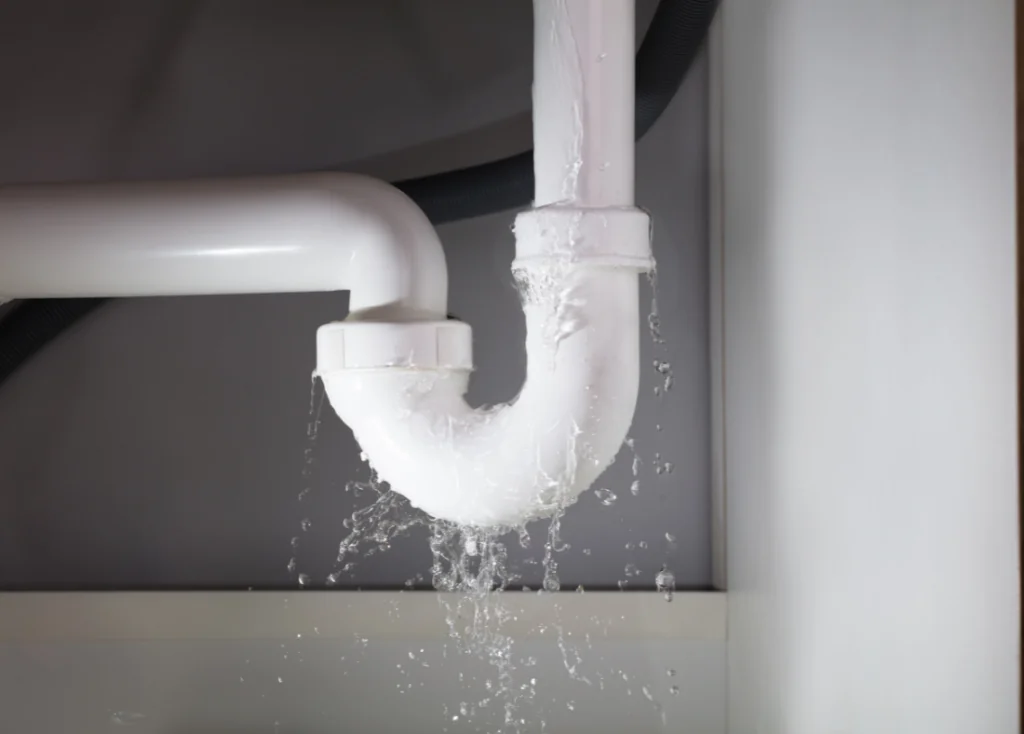
Keep in mind, mold can be dangerous, especially for those with compromised immune systems. Therefore, it is imperative that every person takes proper precautions when they suspect mold. Wear an N-95 mask, gloves, and safety goggles/eye protection when searching for the source or when performing any mold remediation.
How to Remove Mold from Ceiling or Bathroom Ceiling Safely
The best way to remove mold growth from your home or bathroom ceiling is to contact a PuroClean professional who will thoroughly inspect your home and look for any indoor air quality issues that may be causing the black mold growth on your ceiling. From there, we will create a plan of action to resolve the problem before it becomes worse and spreads throughout your property.
Although all traces of mold can never be removed completely, there are some things you can do to remediate it, thus protecting your home and health. If the mold affects an area of your ceiling smaller than 10 square feet, there are a few home remedies you can try.
Keep in mind that these are not the mold remediation techniques used by professionals. Also, be sure to wear proper PPE (N-95 mask, safety goggles, and rubber gloves) and use care when trying any of these solutions.
Vinegar
Vinegar is a natural mold remover and can help prevent the growth of new spores. Add some undiluted white vinegar to a spray bottle. Spray the entire ceiling, not just the affected area, with the vinegar cleaning solution. Spraying the entire ceiling helps combat non-visible mold. After about an hour, wipe and rinse off the vinegar with fresh water and repeat the process. This will begin to remove mold growth from the surface.
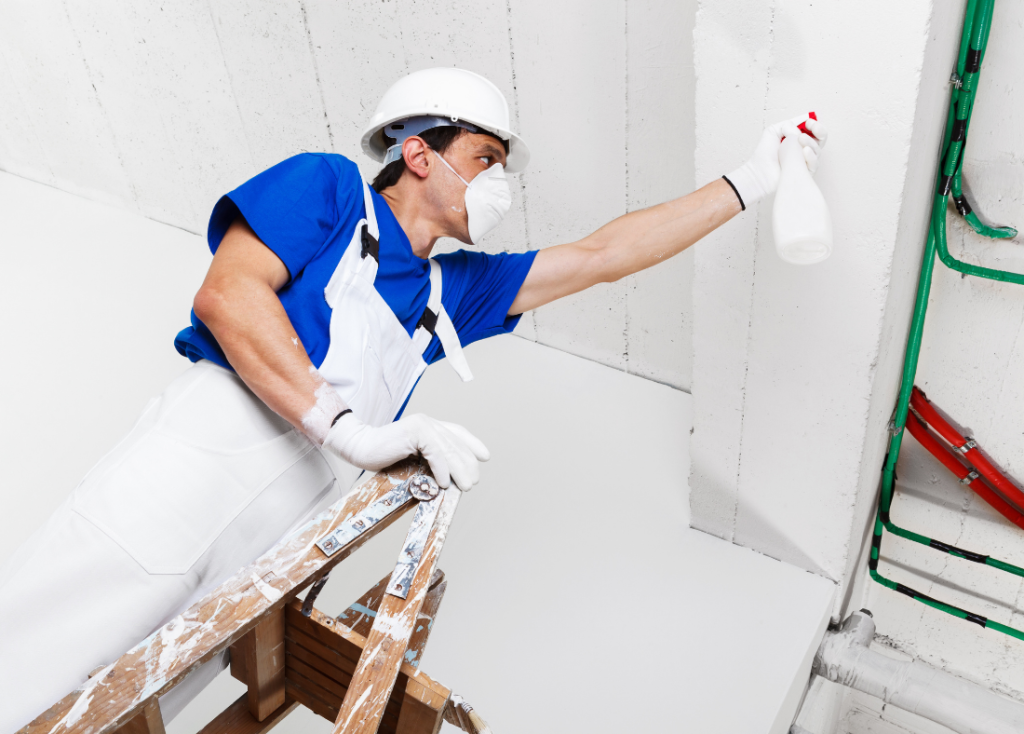
Hydrogen Peroxide
Unlike bleach, which doesn’t actually kill mold, hydrogen peroxide is a great solution for combating your ceiling mold. It is anti-fungal, anti-viral, and anti-bacterial! Before spraying everywhere, be sure to test a small area of your ceiling to make sure this solution will not damage the material. Open any nearby window in the room to help with ventilation during the cleaning process.
Similar to vinegar, add some hydrogen peroxide to a spray bottle. Spray your bathroom ceiling, bedroom ceiling, or other ceilings with the solution. Let it sit for about 10 minutes. Then wipe and rinse the area clean. Use air circulation and an exhaust fan if applicable to dry the ceiling.
Borax
Using a solution of borax (NOT boric acid) and warm water works well to remove mold from ceilings, especially those made out of drywall or wood panels. Mix 1 cup of borax into a gallon container filled with warm water. Next, pour the solution into a spray bottle and spray onto your ceiling. Use only a little on porous materials like unfinished wood or drywall. Water absorption causes these materials to get wet, allowing mold to grow.
Scrub the area with a brush or rag. Wipe the surface clean. Unlike vinegar or hydrogen peroxide, you do not need to rinse the area. In most cases, the borax should prevent mold from growing back.
How Can I Prevent Mold Growth in My Ceiling?
Mold loves darkness and inadequate ventilation, so be sure to keep your home well-lit. Keep windows open as often as possible for the airflow, especially if you have plants around your home that are constantly releasing moisture into the air.
If your ceiling is damp or wet, fix the problem immediately. This can be done by repairing any water leak or damage to your ceiling. It might also be caused by condensation from an air conditioning unit running too long without making up for the loss of cold air through ventilation. You might want to consider turning it off or having someone come out and check for problems with the machine.
Call PuroClean for all Mold Remediation and Water Damage Restoration Needs
Mold can be dangerous and complicated to get rid of. At PuroClean, our professional technicians are trained and certified to find the source of the problem and address the mold in your home. Give us a call 24/7 at 1-800-775-7876, or head to our website to get connected with your local office immediately.

